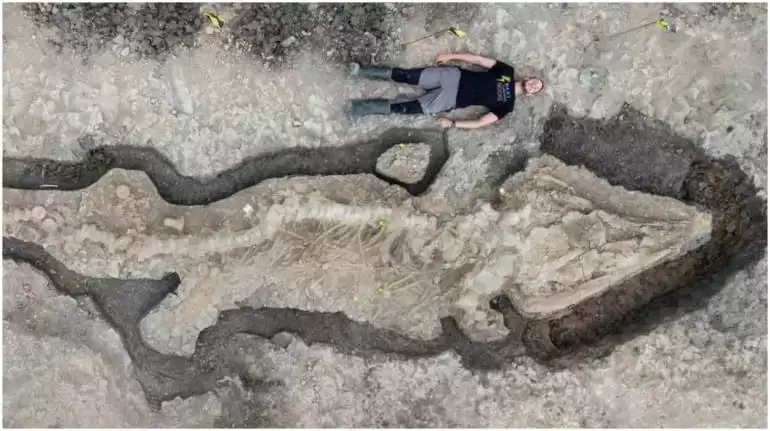The world's largest 'Sea Dragon' has been discovered in the British seas.

An enormous sea dragon has been unearthed in the UK by paleontologists, making it one of the most significant discoveries of the twenty-first century. It's the largest and most complete ichthyosaur skeleton ever discovered in the UK, and it's thought to be the first of its kind.
During the normal draining of a lagoon island for re-landscaping in February of last year, Joe Davis, Rutland Water Conservation Team Leader, discovered the bones.
Joe Davis and Reserves Officer Paul Trevor were walking across the lagoon when Joe observed what seemed to be clay pipes poking out of the muck, according to the Leicestershire and Rutland Wildlife Trust.
"They appeared to be natural." I used to work out in the Hebrides, so I've come across whale and dolphin skeletons. I told Paul they looked like vertebrae since they looked similar. We traced what appeared to be a spine, and Paul uncovered something that could have been a jawbone further along. Joe Davis said, "We couldn't believe it."

Paleontologists have termed the skeleton, which is at least 180 million years old and measures over 10 meters in length with a one-ton cranium, the most complete big ichthyosaur yet discovered in Britain.
Ichthyosaurs originally appeared 250 million years ago and died out 90 million years later. These amazing marine reptiles ranged in size from 1 to more than 25 metres in length and had a body shape that was similar to that of dolphins. They are known as sea dragons because of their huge fangs and eyes.

Two partial and much smaller ichthyosaurs were discovered during the initial building of Rutland Water in the 1970s, thus this isn't the first time ichthyosaurs have been discovered at the Anglian Water reservoir. It is, however, the site's first entire skeleton discovery. Joe Davis described the discovery as a "career highlight," adding that "it's nice to learn so much from the discovery and to believe that this amazing creature was once swimming in the sea."
A team of specialist palaeontologists recruited from throughout the UK uncovered the bones in August and September. "It was a privilege to be in charge of the excavation. Ichthyosaurs were born in Britain, and their fossils have been discovered here for almost 200 years, with the first scientific finds dating back to Mary Anning's discovery along the Jurassic Coast. Despite the fact that there are numerous ichthyosaur fossils in Britain, the Rutland ichthyosaur is the largest skeleton ever discovered in the country "The excavation was led by Dr. Dean Lomax, a palaeontologist.
.png)